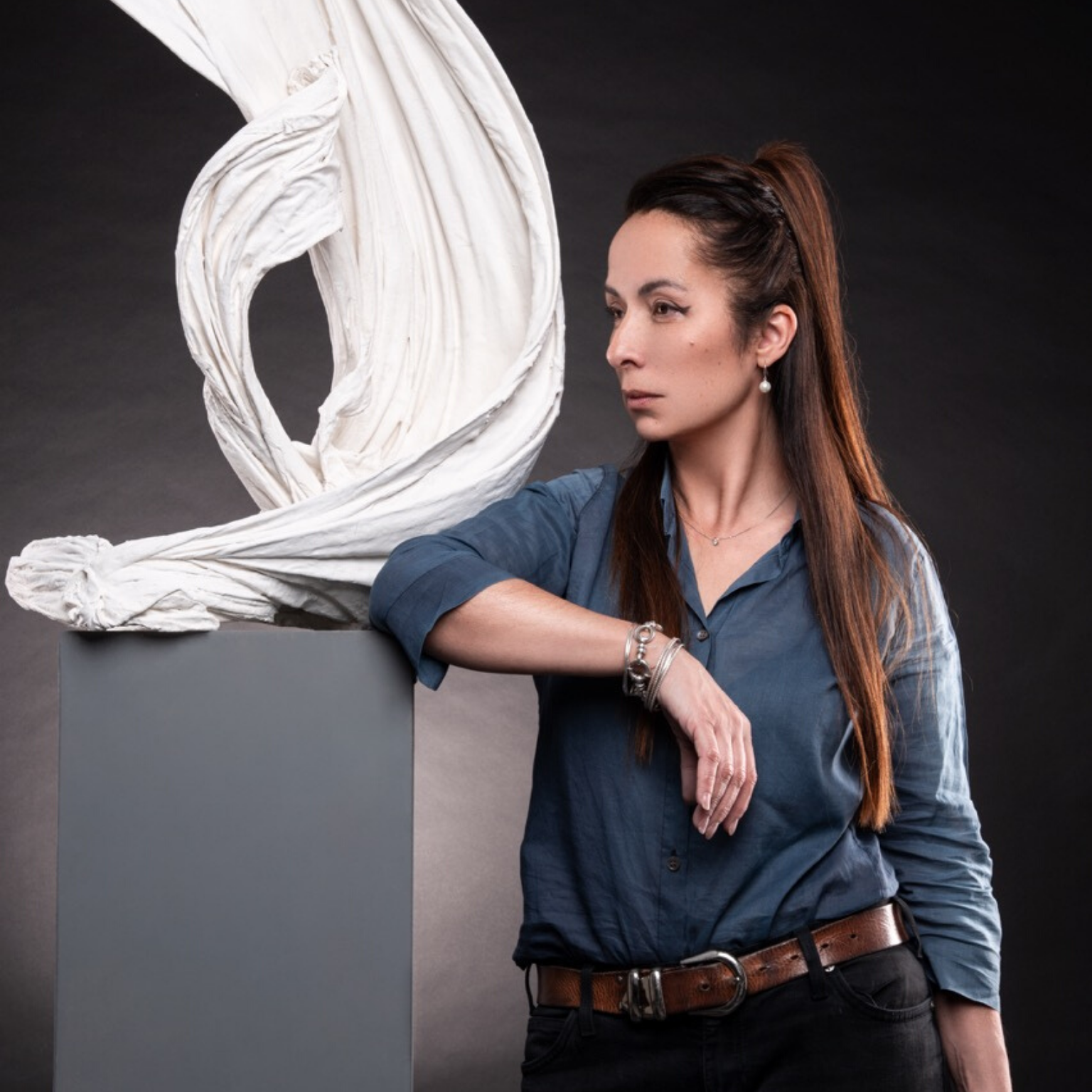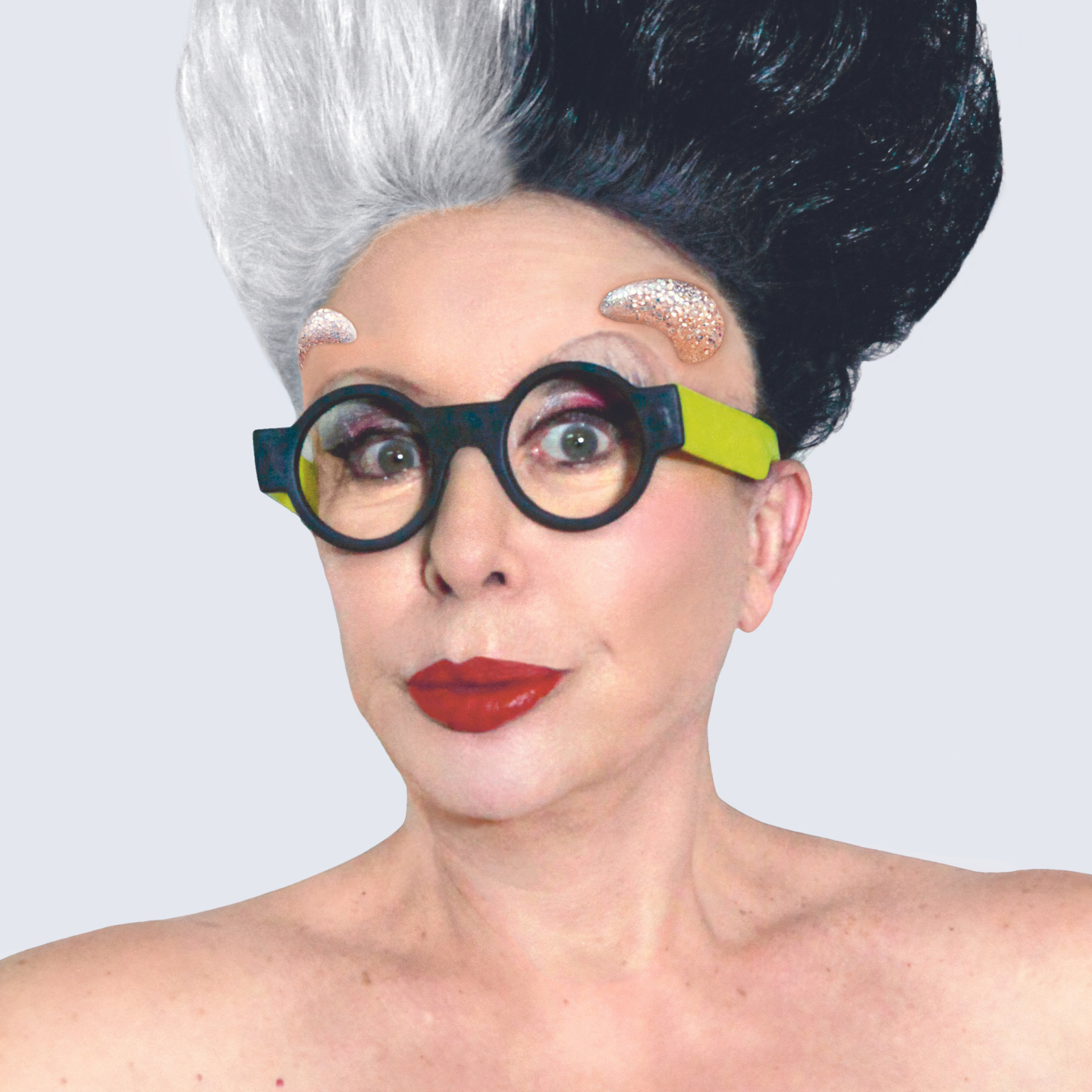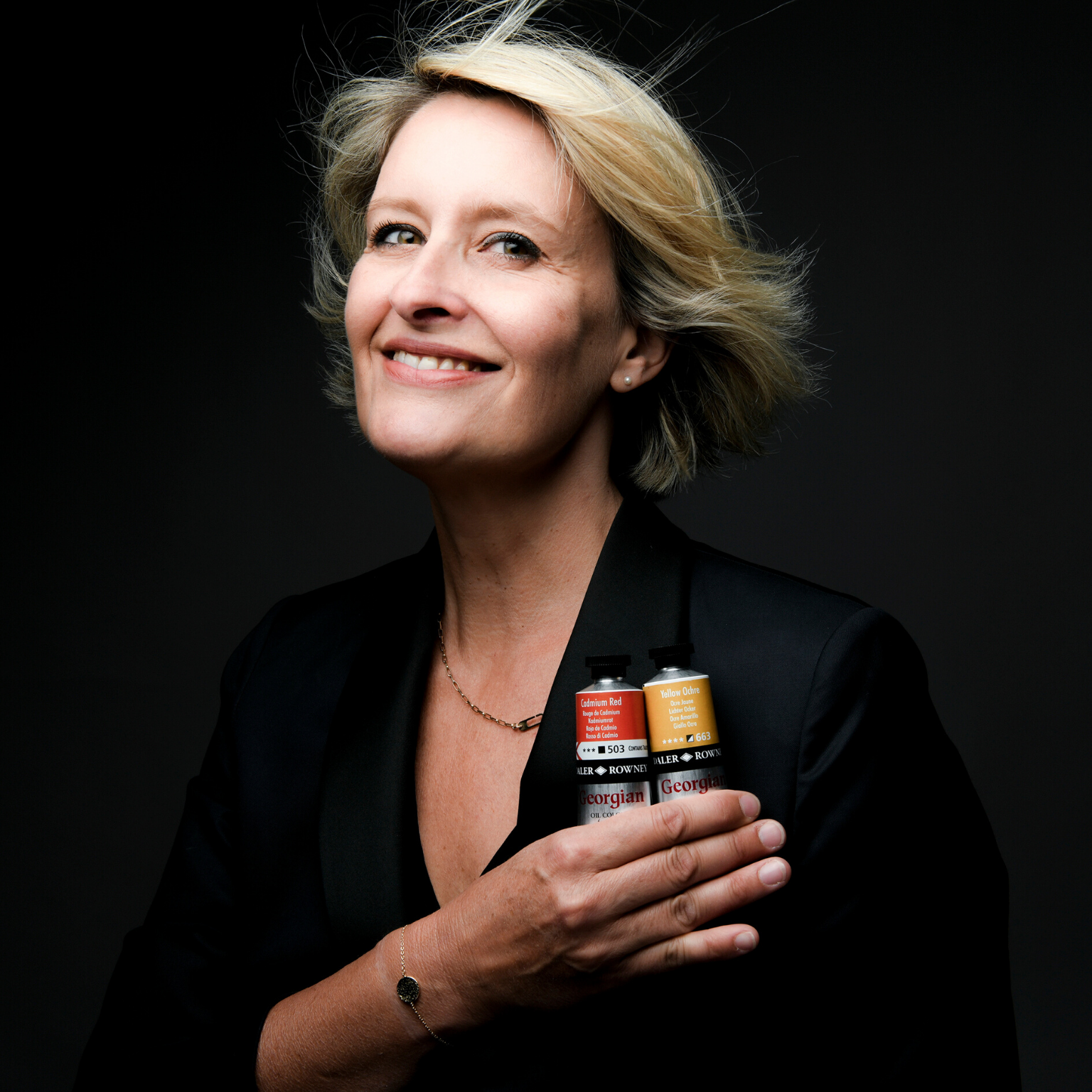Jasmine Pradissitto, visual artist, working and living in London. Photography © Femelle Studios
1.Could you introduce yourself and the purpose of your artistic work?
We can live 3 weeks with food, 3 days without water but only 3 minutes without air. Without a drastic global change in the next ten 10 years, the achievements we have enjoyed through our innovation and inventiveness will become useless if we cannot sustain the most basic of our human needs. Art can help to not simply change our perspectives, but also to provide a visual language that connects communities.
From ‘holograms you can touch’ in new and discarded plastics, to sculptures in nitrogen dioxide (NOX) absorbing ceramic geopolymers, I bring together my background as physicist, sculptor, painter, public speaker, and innovator to create work and partnerships that address the diminishing air quality on our burgeoning planet. It is the most pressing of issues on an increasingly Anthropocene world slowly being reshaped by the things we consume and then disregard.
2.How important are social networks in your work?
As an artist, scientist, mother it was only when I greatly lacked the time for any social network, that I realized how important they were when I started to venture into the world to create them. As a polymath and an innovator in the way I create, isolation is so important for realisation and incubation, but the ‘connection making’ of ideas comes from working with people who do not do what I do.
I am also a great believer that big paradigm shifts in society, which we need in terms of climate change, only occur form small everyday acts of collaboration and sharing of ideas. As a platform for sharing the output of this work, social media- once Twitter and now Facebook and Instagram have created partnerships and sales which simply could not have happened otherwise.
3.Could you share with us the impact of the crisis on the promotion of our work and the way you are facing this situation?
Like most of the physics from my background, which is paradoxical, this time- this Pause- has been a revelation in my practice and its reception. Like most people, especially as I have vulnerable members in my family, the onset of the pandemic caused me angst; I had to grieve for a world that was no more, but being a great lover of my ‘art cave’ or studio which I am fortunate enough to have at home, it was also a wonderful opportunity to finish creating a large, pollution absorbing public sculpture for The Horniman Museum in London as well explore new avenues, enroll on some courses and learn about digital rendering and ways of sharing my work online.
But the greatest positive, and something I will continue is that by sharing some time-lapse of my process in painting (which I had to learn to do for some of my undergrad students), I was amazed by the response and the number of people who the felt brave or inspired enough to either pick up a brush for the first time or revisit an old love.
In terms of promotion, my work is inspired by the environment; with the skies bluer and cleaner than they have been for decades and with a newfound societal love of the natural world, I find the time for my work hs come. Even in darkness, there is light.
4.What’s your favourite museum and why?
I have two which were both formed in the Victorian era as a result of the success the Industrial Revolution afforded England. One is the V&A in central London and the other The Horniman Museum and Gardens, near me in South London.
The former I adore because of its eclectic, beautifully interactive mix of fashion, art, and sculpture but also because it hosts shows that also tackle technology and climate change in relation to all these as well as future design. The Horniman has at its central premise sustainability and biodiversity with meadows roofs, ancient taxidermy, butterfly houses, and gardens. Between the two, they inspire me in different ways with every visit.
Interview by Louise Coussieu Baylac, contributor
MORE
Jasmine Pradissitto on social networks: Instagram
Through her work, the artist seeks to find an ethical framework for our progress by remembering the things that are best about being human; empathy and compassion for each other, our planet home and the fragile biological web of life, of which we are only a small part.



